 The EU’s 2020 Strategy sets the priority of moving to a more resource efficient, green and competitive economy. The LIFE programme has a long track record of innovative approaches for building a resource efficient Europe. This LIFE Focus publication aims to showcase how LIFE funding has generated a vast portfolio of know-how for a diverse range of beneficiaries and sectors: from LIFE Environment projects that have helped improve the resource efficiency of production processes to products that incorporate eco-design principles throughout their lifecycle. Other exemplary projects highlight approaches that can save water, reduce the negative impacts of transport, agriculture, fisheries and the food and beverage sector and lead to more energy-efficient buildings. The publication also shows how LIFE projects are helping to realise key EU policy goals such as better land use and planning, the development of green skills and Green Public Procurement. Todownload the publication, click here.
The EU’s 2020 Strategy sets the priority of moving to a more resource efficient, green and competitive economy. The LIFE programme has a long track record of innovative approaches for building a resource efficient Europe. This LIFE Focus publication aims to showcase how LIFE funding has generated a vast portfolio of know-how for a diverse range of beneficiaries and sectors: from LIFE Environment projects that have helped improve the resource efficiency of production processes to products that incorporate eco-design principles throughout their lifecycle. Other exemplary projects highlight approaches that can save water, reduce the negative impacts of transport, agriculture, fisheries and the food and beverage sector and lead to more energy-efficient buildings. The publication also shows how LIFE projects are helping to realise key EU policy goals such as better land use and planning, the development of green skills and Green Public Procurement. Todownload the publication, click here.
Monthly Archives / June 2011
Questionnaire launched on future of researcher development
 The research careers development body, Vitae, is inviting post-docs and other research staff to complete a questionnaire on the future of research careers. It especially wants to find out how do to ensure that the UK can continue to produce a flow of highly skilled researchers in economically challenging times. Together with other organisations, including Research Councils UK, the Confederation of British Industry and universities, Vitae will draft a national professional and career development strategy for researchers from 2012 to 2017. Submissions are due by 8 June
The research careers development body, Vitae, is inviting post-docs and other research staff to complete a questionnaire on the future of research careers. It especially wants to find out how do to ensure that the UK can continue to produce a flow of highly skilled researchers in economically challenging times. Together with other organisations, including Research Councils UK, the Confederation of British Industry and universities, Vitae will draft a national professional and career development strategy for researchers from 2012 to 2017. Submissions are due by 8 June
Small university fears confirmed in funding allocations
 Pleas from smaller universities to revise proposed changes to the Higher Education Innovation Fund have been ignored, with confirmation on 26 May that 31 institutions are to lose their funding. The changes follow the government’s decision to reform HEIF to focus on the highest-performing universities working with businesses. HEFCE’s statement
Pleas from smaller universities to revise proposed changes to the Higher Education Innovation Fund have been ignored, with confirmation on 26 May that 31 institutions are to lose their funding. The changes follow the government’s decision to reform HEIF to focus on the highest-performing universities working with businesses. HEFCE’s statement
European Perspectives in Personalised Medicine Conference – Presentations Available here!
 Presentations and videos shown at the recent conference on “European Perspectives in Personalised Medicine” are now available.
Presentations and videos shown at the recent conference on “European Perspectives in Personalised Medicine” are now available.
Didn’t make the ICT Proposers Day conference? Don’t worry we have the presentations!
 Presentations given at the ICT Proposers Day 2011 in Budapest are now available here and include the topics to be published under Calls 8 and 9 of the 2011-2012 ICT Work Programme.
Presentations given at the ICT Proposers Day 2011 in Budapest are now available here and include the topics to be published under Calls 8 and 9 of the 2011-2012 ICT Work Programme.
Results of a European Survey on Youth Mobility
 The results of Youth on the Move – a survey on youth mobility has been published this week. The survey asked how many young Europeans would be willing to move country for work reasons, how many had moved for study and how they finance their mobility.
The results of Youth on the Move – a survey on youth mobility has been published this week. The survey asked how many young Europeans would be willing to move country for work reasons, how many had moved for study and how they finance their mobility.
Sustainable methodology of conserving large historic vehicles in the museum environment
Dr Zulfiqar Khan, School of Design, Engineering and Computing, discusses the work undertaken by BU academics and the Tank Museum to conserve large military vehicles…
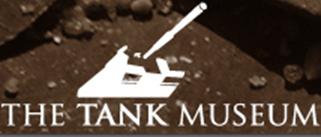 The Tank Museum Bovington has the largest collection of military tanks from World War 1, 2 & recent. These historic military vehicles and all other large objects have always been key entities, which provide a wealth of information and insight into the past design process, design methods, materials and manufacturing techniques. These rare & historic collections are valuable assets for our present and the future generation.
The Tank Museum Bovington has the largest collection of military tanks from World War 1, 2 & recent. These historic military vehicles and all other large objects have always been key entities, which provide a wealth of information and insight into the past design process, design methods, materials and manufacturing techniques. These rare & historic collections are valuable assets for our present and the future generation.
These historic vehicles like any other museum artefacts are associated with deterioration due to aging mechanisms such as corrosion, stress corrosion and fatigue crack propagation and wear in the interacting surface.
Large military vehicles such as military tanks were exposed to extreme physical and environmental conditions during the war, in addition after the war the vehicles were left unattended for an unidentified period in the uncontrolled environment resulting accelerated aging mechanisms.
Corrosion is one of the growing persistent problems in the military vehicles in the Tank Museum at Bovington. The historic vehicles are stored in the museum in two distinct controlled and uncontrolled environments with a transitional mode when vehicles move between the two. Varying environmental conditions together with operational factors pose a significant risk to the vehicles.
To preserve these vehicles in a valuable state for the benefit of the society, sustainable conservation techniques are required to slow down or suspend the deterioration within these historic vehicles.
Extraordinary interests and efforts of the Director of The Tank Museum at Bovington Mr. Richard Smith and Professor Mark Hadfield, Director Sustainable Design Research Centre (SDRC) at Bournemouth University lead to the design of a research project between BU and the Tank Museum. Mr Adil Saeed has been conducting important research under the supervision of Dr. Zulfiqar Khan co-director SDRC, Dr. Nigel Garland and Professor Mark Hadfield as mentor.
 Adil was recently invited as guest speaker by Forensic Institute Cranfield University at Shrivenham where his guest lecture was well attended and received. In addition Adil has also presented the outcome of the ongoing research in the Department of Materials at Oxford University, where member of the research consortia and Oxford university staff attended the presentation.
Adil was recently invited as guest speaker by Forensic Institute Cranfield University at Shrivenham where his guest lecture was well attended and received. In addition Adil has also presented the outcome of the ongoing research in the Department of Materials at Oxford University, where member of the research consortia and Oxford university staff attended the presentation.
Recent research outcomes and results were also presented in a paper at an international conference of Society of Tribologists and Lubrication Engineers (STLE) in May 2011 at Atlanta, Georgia. STLE is highly reputable organisation with members around the world. The conference in May attracted around 400 papers with well over 1000 delegates, 70 multinationals industrial participants and 40 student posters.
The aims of the research are to indentify the aging mechanisms such as corrosion, stress corrosion and fatigue cracking, failure due to static and dynamic stresses including the role of residual stresses, deterioration in the interacting components and other potential risks in the historic vehicles through non-destructive methods and develop sustainable methodology for the preservation of these vehicles in different museum environments.
Final Report on the External Evaluation of the European Institute of Innovation and Technology Published
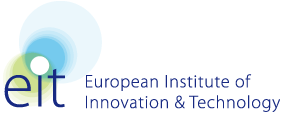 The report on an independent evaluation of the European Institute of Innovation and Technology has now been published. In addition to formulating the achievements of the EIT so far, the Report highlights some of the main challenges the EIT should address in the next few years. To read the full report, click here.
The report on an independent evaluation of the European Institute of Innovation and Technology has now been published. In addition to formulating the achievements of the EIT so far, the Report highlights some of the main challenges the EIT should address in the next few years. To read the full report, click here.
Guidance Paper for European Innovation Partnerships on Active and Healthy Ageing Steering Group released
 The European Innovation Partnership on Active and Healthy Ageing working paper gives an overview on the EIP AHA’s targets and objectives and its role (headline target to add two healthy life years to the average life span of European citizens) and detailed guidance on the role and functioning of the high-level steering group, including a list of already nominated members in the Annex to the document. The group is composed of 33 members, including representatives from the European institutions, Joint Programming Initiatives, industry and European interest organisations, as well as a selected number of representatives from some EU member states. The paper also outlines a proposed timetable for the work of the steering group; the first meeting took place in May 2011, the strategic innovation plan should be finalised in autumn 2011, and the EC aims to analyse the plan by the end of 2011. It will then be presented in a Communication to the Council and European Parliament, and should then start with the implementation phase
The European Innovation Partnership on Active and Healthy Ageing working paper gives an overview on the EIP AHA’s targets and objectives and its role (headline target to add two healthy life years to the average life span of European citizens) and detailed guidance on the role and functioning of the high-level steering group, including a list of already nominated members in the Annex to the document. The group is composed of 33 members, including representatives from the European institutions, Joint Programming Initiatives, industry and European interest organisations, as well as a selected number of representatives from some EU member states. The paper also outlines a proposed timetable for the work of the steering group; the first meeting took place in May 2011, the strategic innovation plan should be finalised in autumn 2011, and the EC aims to analyse the plan by the end of 2011. It will then be presented in a Communication to the Council and European Parliament, and should then start with the implementation phase
EU University Association responds to initiatives on education & research
 The EUA has published responses to two European Commission consultation documents – Green Paper on a Common Strategic Framework for future EU Research funding and Consultation on the Modernisation of Higher Education in Europe.
The EUA has published responses to two European Commission consultation documents – Green Paper on a Common Strategic Framework for future EU Research funding and Consultation on the Modernisation of Higher Education in Europe.
The Green Paper aims to define a new framework for EU research and innovation funding for FP8 and the Consultation relates to the ECs plans to adopt a new communication on the modernisation of higher education in the third quarter of 2011.
EUA sees the development of the European Research Area and European Higher Education Area as being crucially linked if Europe’s universities are to play their full part in contributing to the achievement of the Europe 2020 objectives.
Update!!! Latest position on future of EU funds 2014-2020
 The EU budget proposals for 2014-2020 are expected to be published on June 29th and funding proposals in autumn 2011; the budget is not expected to be significantly more than for 2007-13. Debate on role of Europe 2020 agenda in determining funding priorities continues, but it is likely that there will be 15 to 20 thematic priorities. The EU is likely to propose a specific urban focus within the funds with city place based programmes developed.
The EU budget proposals for 2014-2020 are expected to be published on June 29th and funding proposals in autumn 2011; the budget is not expected to be significantly more than for 2007-13. Debate on role of Europe 2020 agenda in determining funding priorities continues, but it is likely that there will be 15 to 20 thematic priorities. The EU is likely to propose a specific urban focus within the funds with city place based programmes developed.
Controversial! Seismologists face trial for manslaughter of Italian earthquake victims
 6 seismologists and a government official face trial for the manslaughter of 309 people who died in an earthquake in L’Aquila, Italy, Nature reports. The scientists were part of a committee in charge of assessing seismic risk in the area who one week before the earthquake told the public that there was no danger. If found guilty the scientists could face jail sentences of up to 12 years.
6 seismologists and a government official face trial for the manslaughter of 309 people who died in an earthquake in L’Aquila, Italy, Nature reports. The scientists were part of a committee in charge of assessing seismic risk in the area who one week before the earthquake told the public that there was no danger. If found guilty the scientists could face jail sentences of up to 12 years.
Global University Rankings ‘startlingly influential’
Times Higher Education today features an article which states while Rankings can provide insights that can help guide policymakers, politicians need to be aware of their inherent limitations following the two-day global forum hosted by the United Nations Educational, Scientific and Cultural Organisation this week.
Policies recommended to boost green growth and innovation in the EU
 The OECD report Towards Green Growth provides advice for governments to boost growth and protect the environment at the same time. It recommends tax and competition measures aimed at conserving natural capital and states governments should add innovation policies that encourage an efficient and sparing use of natural resources. Suggested policies include “temporary support measures” to promote the uptake of efficient technologies against the dominance of existing ones. The report also suggests policy measures to make pollution more expensive, such as taxes or permit systems.
The OECD report Towards Green Growth provides advice for governments to boost growth and protect the environment at the same time. It recommends tax and competition measures aimed at conserving natural capital and states governments should add innovation policies that encourage an efficient and sparing use of natural resources. Suggested policies include “temporary support measures” to promote the uptake of efficient technologies against the dominance of existing ones. The report also suggests policy measures to make pollution more expensive, such as taxes or permit systems.
More, more, more! MEPs back rise in EU research money
 MEPs in charge of defining EU budget priorities after 2013 have called for a 5% increase in the overall 2014-2020 budget, which will include an increase in research funding in a statement this week. National governments had asked for a budget freeze, but MEPs say this would affect the agreed boost for research and innovation funding. They suggest spending more money on research and energy infrastructure, but freezing the budget for regional policy and agriculture. Parliament will vote on this proposal on 9 June.
MEPs in charge of defining EU budget priorities after 2013 have called for a 5% increase in the overall 2014-2020 budget, which will include an increase in research funding in a statement this week. National governments had asked for a budget freeze, but MEPs say this would affect the agreed boost for research and innovation funding. They suggest spending more money on research and energy infrastructure, but freezing the budget for regional policy and agriculture. Parliament will vote on this proposal on 9 June.
European Education Benchmarks – working paper released
 The EC has published a Working Paper on the development of benchmarks on education and training for employability and on learning mobility which presents ideas for new benchmarks covering new policy issues.
The EC has published a Working Paper on the development of benchmarks on education and training for employability and on learning mobility which presents ideas for new benchmarks covering new policy issues.
Phytoplankton research aboard R.V. Cefas Endeavour
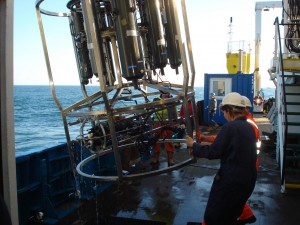 Dr. Dan Franklin and Deborah Steele, School of Applied Sciences, have joined forces with scientists from across Europe on a research cruise in the North Sea exploring the abundance and growth of plant cells (phytoplankton).
Dr. Dan Franklin and Deborah Steele, School of Applied Sciences, have joined forces with scientists from across Europe on a research cruise in the North Sea exploring the abundance and growth of plant cells (phytoplankton).
The research team conducted their study aboard the R.V. Cefas Endeavour, using specialised optical instruments called flow cytometers, which analyse thousands of cells per second.
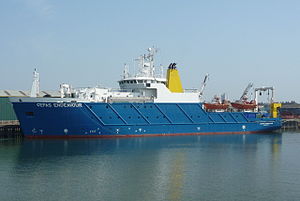 Using this technology the scientists have built up a comprehensive picture of what grows where and how productive the different cells are.
Using this technology the scientists have built up a comprehensive picture of what grows where and how productive the different cells are.
 This data will improve the way plant growth is seen by satellites and will help to map out fish production, which is ultimately dependent on phytoplankton growth.
This data will improve the way plant growth is seen by satellites and will help to map out fish production, which is ultimately dependent on phytoplankton growth.
Dan Franklin said: “We were exceptionally lucky with the weather and enjoyed calm seas throughout the cruise. Our track took us North from Lowestoft, across to the Dogger Bank, east into Dutch coastal waters before returning to Lowestoft via the Greater Gabbard wind farm in the Thames estuary. The fact that we had calm seas made the lab work much easier. I found the habitat complexity and biodiversity of the North Sea a revelation – everywhere was different. When not working long hours in the laboratory, we were fortunate to see plenty of wildlife such as whitebeak dolphins, various seabirds such as gannets and guillemots, and possibly minke whales and orcas.”
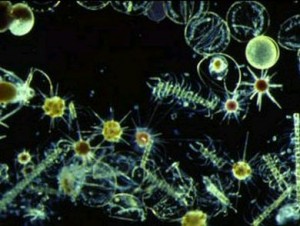 The research trip was made possible by the generosity of CEFAS, the government laboratory responsible for monitoring fish stocks, promoting the sustainable use of marine resources and improving the marine environment. BU extends thanks to CEFAS for this opportunity.
The research trip was made possible by the generosity of CEFAS, the government laboratory responsible for monitoring fish stocks, promoting the sustainable use of marine resources and improving the marine environment. BU extends thanks to CEFAS for this opportunity.
You can view an excellent video of dolphins from the trip below:
httpv://www.youtube.com/watch?v=-DhzSaq_KS4
EC Strategy Launched to Improve Biodiversity
 The European Commission has launched a new strategy to protect and improve the state of Europe’s biodiversity over the next decade. Six priority targets have been set which address the main drivers of biodiversity loss. They are:
The European Commission has launched a new strategy to protect and improve the state of Europe’s biodiversity over the next decade. Six priority targets have been set which address the main drivers of biodiversity loss. They are:
- Full implementation of existing nature protection legislation and network of natural reserves, to ensure major improvements to the conservation status of habitats and species
- Improving and restoring ecosystems and ecosystem services wherever possible, notably by the increased use of green infrastructure
- Ensuring the sustainability of agriculture and forestry activities
- Safeguarding and protecting EU fish stocks
- Controlling invasive species, a growing cause of biodiversity loss in the EU
- Stepping up the EU’s contribution to concerted global action to avert biodiversity loss.
The strategy is in line with two major commitments made by EU leaders in March 2010 – halting the loss of biodiversity in the EU by 2020, and protecting, valuing and restoring EU biodiversity and ecosystem services by 2050. It is also in line with global commitments made in Nagoya in October 2010, in the context of the Convention on Biological Diversity, where world leaders adopted a package of measures to address biodiversity loss world wide over the coming decade.
As an integral part of the Europe 2020 Strategy, the biodiversity strategy will contribute to the EU’s resource efficiency objectives by ensuring that Europe’s natural capital is managed sustainably, as well as to climate change mitigation and adaptation goals by improving the resilience of ecosystems and the services they provide.
Full details of the strategy and its launch can be found here.










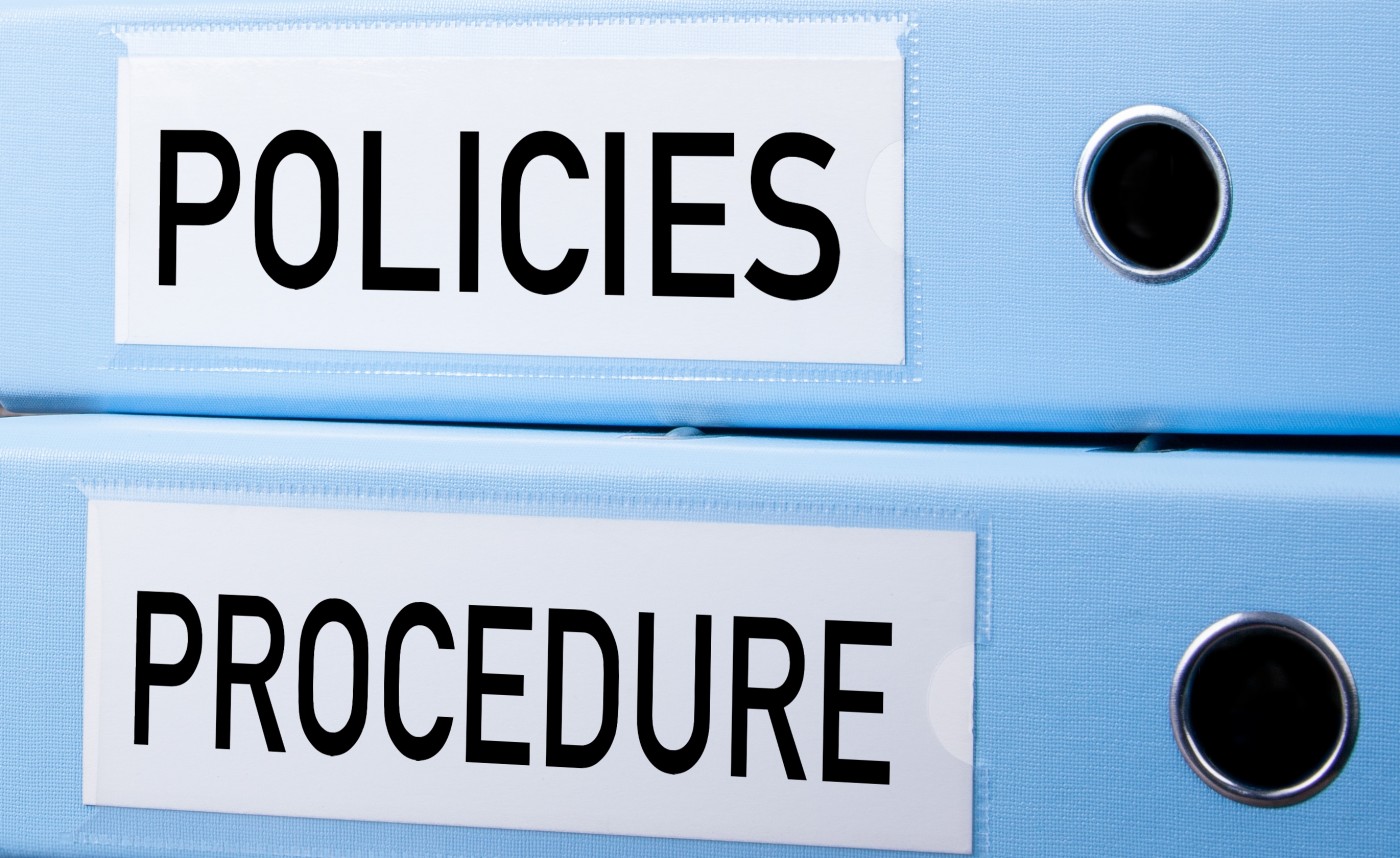
 New Nepal scoping review on maternal & neonatal health
New Nepal scoping review on maternal & neonatal health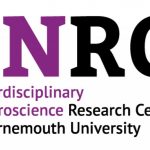 Fourth INRC Symposium: From Clinical Applications to Neuro-Inspired Computation
Fourth INRC Symposium: From Clinical Applications to Neuro-Inspired Computation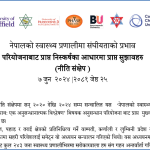 Writing policy briefs
Writing policy briefs Upholding Excellence: The Concordat to Support Research Integrity
Upholding Excellence: The Concordat to Support Research Integrity ECR Funding Open Call: Research Culture & Community Grant – Application Deadline Friday 12 December
ECR Funding Open Call: Research Culture & Community Grant – Application Deadline Friday 12 December MSCA Postdoctoral Fellowships 2025 Call
MSCA Postdoctoral Fellowships 2025 Call ERC Advanced Grant 2025 Webinar
ERC Advanced Grant 2025 Webinar Horizon Europe Work Programme 2025 Published
Horizon Europe Work Programme 2025 Published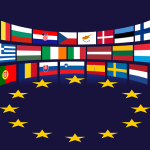 Horizon Europe 2025 Work Programme pre-Published
Horizon Europe 2025 Work Programme pre-Published Update on UKRO services
Update on UKRO services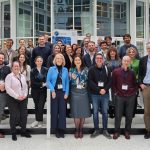 European research project exploring use of ‘virtual twins’ to better manage metabolic associated fatty liver disease
European research project exploring use of ‘virtual twins’ to better manage metabolic associated fatty liver disease